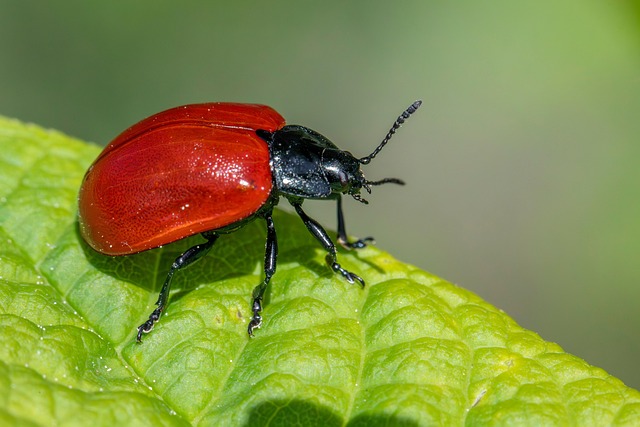In Denver's urban setting, balancing development and wildlife harmony is key. For bird control targeting pigeons on commercial buildings, identifying entry points through meticulous exterior inspections is crucial. Effective strategies include mesh netting, spike barriers, nest removal, and repellents. When addressing squirrel exclusion, prioritize safe, humane methods like physical barriers and proper nest/dropping cleanup to deter squirrels without harm. This holistic approach promotes peaceful coexistence between humans and nature in Denver's vibrant urban landscape while maintaining a clean, secure environment for businesses.
In the bustling city of Denver, maintaining a healthy balance between urban development and wildlife harmony is essential. This article offers a comprehensive guide to effective bird control, specifically targeting pigeons on commercial buildings. We explore ‘squirrel exclusion plans’ as a sustainable approach to managing these feathered visitors. By identifying entry points and breeding areas, we provide strategies for safe and humane methods, ensuring both property protection and the well-being of wildlife.
- Understanding Squirrel Exclusion: A Comprehensive Guide for Commercial Buildings in Denver
- Identifying Entry Points and Common Breeding Areas: Strategies for Effective Bird Control
- Implementing Safe and Humane Exclusion Methods: Protecting Both Property and Wildlife
Understanding Squirrel Exclusion: A Comprehensive Guide for Commercial Buildings in Denver

In the vibrant city of Denver, maintaining a healthy balance between urban development and wildlife harmony is essential. One specific challenge arises from the presence of squirrels, particularly in commercial buildings. Squirrel exclusion plans are designed as a comprehensive guide for property managers to address this issue effectively. This approach involves understanding the behaviors and habitats of squirrels to implement tailored strategies that prevent their entry without causing harm.
By focusing on bird control for pigeons, which often accompany squirrels, these plans aim to create an unwelcoming environment for intruders. Techniques such as sealing entry points, using deterrents, and employing exclusion methods ensure a secure space for businesses while maintaining the well-being of wildlife. Implementing these measures in commercial buildings across Denver contributes to a harmonious coexistence, fostering a vibrant urban landscape where humans and nature thrive side by side.
Identifying Entry Points and Common Breeding Areas: Strategies for Effective Bird Control

Identifying entry points is a critical step in wildlife control, especially for bird species like pigeons that can cause significant damage to commercial buildings in Denver. Pigeons are highly adaptable and often find their way into hard-to-reach areas through small gaps, cracks, or openings on rooftops, walls, and windowsills. A thorough inspection of the building’s exterior is necessary to pinpoint these entry points. Using tools like ladders and binoculars, professionals can assess each side of the structure, looking for any signs of pigeon activity, such as droppings, nests, or birds roosting.
Common breeding areas are another focus when implementing bird control measures. Pigeons prefer elevated and hidden spots for nesting, making ledges, vents, and roof edges ideal locations. By understanding these preferences, exclusion plans can be tailored effectively. This may involve installing physical barriers like mesh netting or spikes to block entry points, ensuring any existing nests are removed, and using repellents in areas where pigeons congregate. Such strategies are essential for maintaining a pigeon-free environment on commercial buildings, preventing structural damage and unsanitary conditions associated with bird droppings.
Implementing Safe and Humane Exclusion Methods: Protecting Both Property and Wildlife

When developing a squirrel exclusion plan, it’s paramount to prioritize both safety and humanity. Traditional methods like trapping or poisoning can cause harm to wildlife, which goes against conservation efforts and ethical practices. Instead, opt for safe and humane techniques that encourage animals to leave voluntarily while preventing re-entry.
For commercial buildings in Denver, particularly those dealing with bird control for pigeons, this might involve installing physical barriers such as netting or mesh fencing. These can be strategically placed around vulnerable areas like ledges or openings, deterring squirrels without trapping or harming them. Additionally, proper cleanup and sanitization of any existing squirrel nests or droppings are crucial to eliminating potential attractions while ensuring a safe environment for both the building’s occupants and wildlife.
When implementing wildlife control, particularly for squirrels and pigeons on commercial buildings in Denver, a comprehensive understanding of their behavior and effective strategies are key. By identifying entry points, common breeding areas, and utilizing safe, humane methods of exclusion, building owners can protect their properties while also preserving the well-being of these animals. This balanced approach ensures a peaceful coexistence between urban structures and nature’s inhabitants, fostering an environment that is both secure and harmonious.
